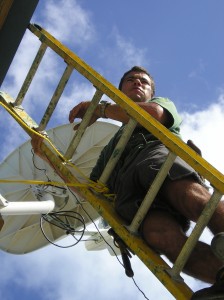If you distill all the rules and protocols of scuba diving, there is one fundamental principle: breathe.
Perhaps this seems redundant. On land, the physiological process of taking air into one’s lungs and then expelling it is also pretty essential. Yet when PADI, the Professional Association of Dive Instructors, declares, “always breathe slowly and deeply and continuously,” in their Open Water Manuel, they aren’t kidding around. Even several meters below the surface, divers should never hold their breath. The physical effects of changing depths, caused by tremendous fluctuations in pressure, must be regulated by a continuous cycle of inhalation, exhalation. Failure to do so could lead to arterial air embolism, pneumothorax, mediastinal emphysima, subcutaneous emphysima—conditions whose names alone are enough to scare most divers.
Luckily, I am not scared. Or at least, I am not as nervous as expected. I am a first time diver, but I am learning from a Divemaster who is patient, thorough, and reassuring. I came to The Island School this fall as a Teaching Fellow for the Continue reading






